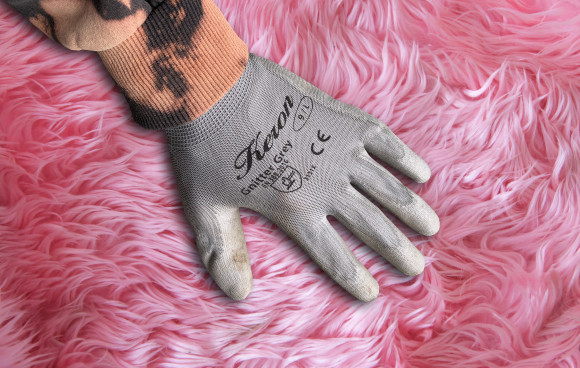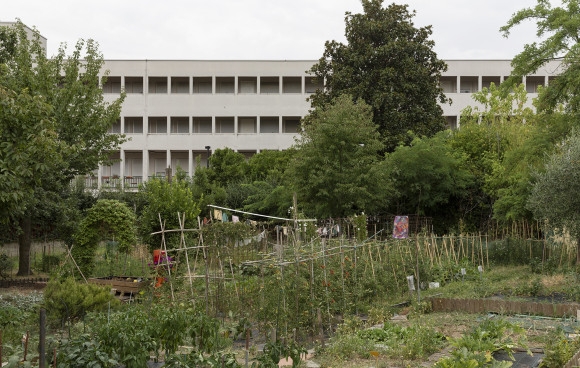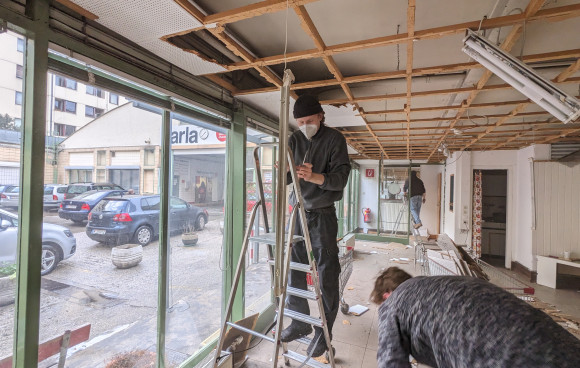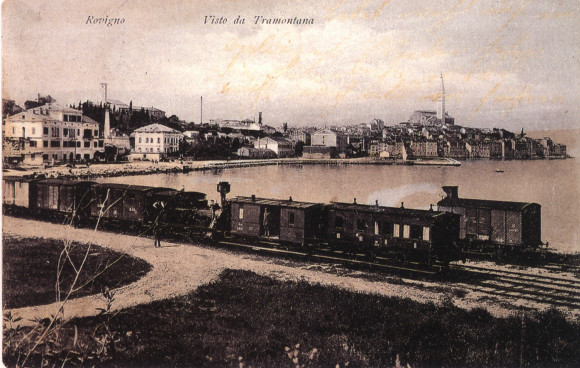Entwerfen
EXISTENZMAXIMUM Otium et Negotium in Vienna
Zusammenfassung hier: https://www.youtube.com/watch?v=Jpwuo48D2eg
Cato, who was of about the same years, Marcus, my son, as that Publius Scipio who first bore the surname of Africanus, has given us the statement that Scipio used to say that he was never less idle than when he had nothing to do and never less lonely than when he was alone. An admirable sentiment, in truth, and becoming to a great and wise man. It shows that even in his leisure hours his thoughts were occupied with public affairs and that he used to commune with himself when alone; and so not only was he never unoccupied, but he sometimes had no need for company. The two conditions, then, that prompt others to idleness— leisure and solitude—only spurred him on. I wish I could say the same of myself and say it truly. But if by imitation I cannot attain to such excellence of character, in aspiration, at all events, I approach it as nearly as I can; for as I am kept by force of armed treason away from practical politics and from my practice at the bar, I am now leading a life of leisure. For that reason I have left the city and, wandering in the country from place to place, I am often alone.
Cicero, De Officiis, III
12h, 15 ECTS
WORKSHOPDAYS
tba
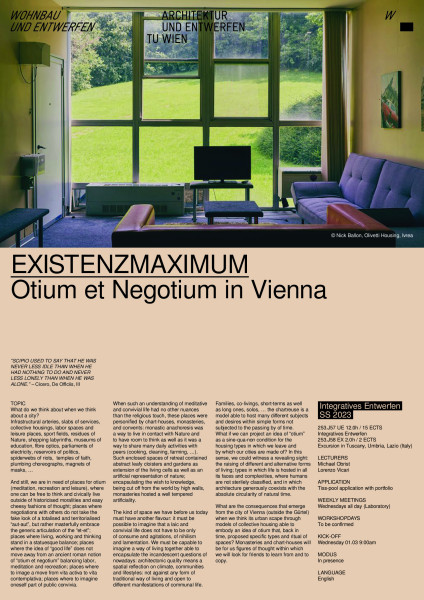
What do we think about when we think about a city?
Infrastructural arteries, slabs of services, collective housings, labor spaces and leisure places, sport fields, residues of Nature, shopping labyrinths, museums of education, fibre optics, parliaments of electricity, reservoirs of politics, spiderwebs of riots, temples of faith, plumbing choreographs, magnets of masks, …
And still, we are in need of places for otium (meditation, recreation and leisure), where one can be free to think and civically live outside of historicised moralities and easy cheesy fashions of thought; places where negotiations with others do not take the fake look of a totalised and territorialised “aut-aut”, but rather masterfully embrace the generic articulation of the “et-et”; places where living, working and thinking stand in a statuesque balance; places where the idea of “good life” does not move away from an ancient roman notion of “otium et negotium” balancing labor, meditation and recreation; places where to image a move from vita activa to vita contemplativa; places where to imagine oneself part of public convivia.
When such an understanding of meditative and convivial life had no other nuances than the religious touch, these places were personified by chart-houses, monasteries, and convents: monastic anachoresis was a way to live in contact with Nature and to have room to think as well as it was a way to share many daily activities with peers (cooking, cleaning, farming, …). Such enclosed spaces of retreat contained abstract leafy cloisters and gardens as extension of the living cells as well as an artificial representation of nature; encapsulating the wish to knowledge, being cut off from the world by high walls, monasteries hosted a well tempered artificiality.
The kind of space we have before us today must have another flavour: it must be possible to imagine that a laic and convivial life does not have to be only of consume and agitations, of nihilism and lamentation. We must be capable to imagine a way of living together able to encapsulate the incandescent questions of nowadays: architectonic quality means a spatial reflection on climate, communities and lifestyles: not against any form of traditional way of living and open to different manifestations of communal life. Families, co-livings, short-terms as well as long ones, solos, … the chartreuse is a model able to host many different subjects and desires within simple forms not subjected to the passing by of time.
What if we can project an idea of “otium” as a sine-qua-non condition for the housing types in which we leave and by which our cities are made of? In this sense, we could witness a revealing sight: the raising of different and alternative forms of living; types in which life is hosted in all its faces and complexities, where humans are not sterilely classified, and in which architecture generously coexists with the absolute circularity of natural time in contrast to the linearity of historical time, with the cycle of nights following days. With the rain and the blossoming of the trees, the falling of their leaves and so on, one after the other in a repetitive spectacle of a “climatic architecture” in which the sky and the nature of the common garden-like spaces would appear as a metaphor for cyclical time and the cell of private living as a fantastic diorama for its contemplation.
What are the consequences that emerge from the city of Vienna (outside the Gürtel) when we think its urban scape through models of collective housing able to embody an idea of otium that, back in time, proposed specific types and ritual of spaces? Monasteries and chart-houses will be for us figures of thought within which we will look for friends to learn from and to copy.
At the beginning of the semester we will create a dense environment through redrawings, researches, lectures and discussions along with other studios.
Later on, in the end of March, we will go in a one week trip to see examples of chart-houses, monasteries and convents in central Italy (Tuscany, Umbria and Lazio) as well as modern and contemporary fragments of another way of living.
Once we are back in Vienna, a project will be developed in individual work, through workshop formats and in weekly laboratory days.


